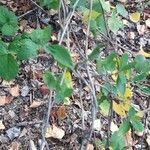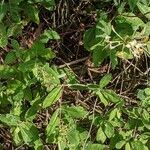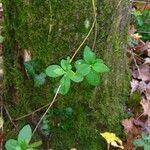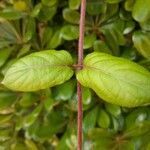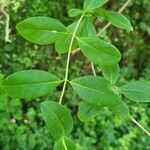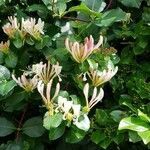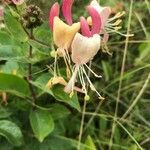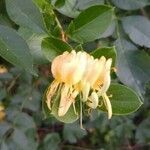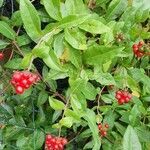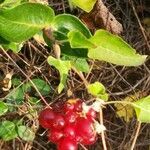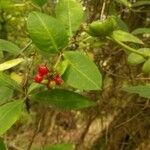Woody climber, the younger branches usually pubescent and often glandular; lvs all separate, glabrous, elliptic to obovate, acute or obtuse, or the uppermost broadly ovate and acuminate; whorls of fls aggregated into a capitate cluster, the bractlets glandular; cor pale yellow, 3–5 cm, the tube glandular, longer than the lips; 2n=18, 36, 54. Native of Europe, n. Afr., and w. Asia, sometimes escaped from cult., especially eastward.
A shrub. It can be a climbing plant up to 6 m tall. The leaves are entire and opposite. They are narrowly oval and greyish-green. There are up to 12 flowers in a head all growing from a common point. They are trumpet shape. The fruit are bright red berries in a tight cluster.
